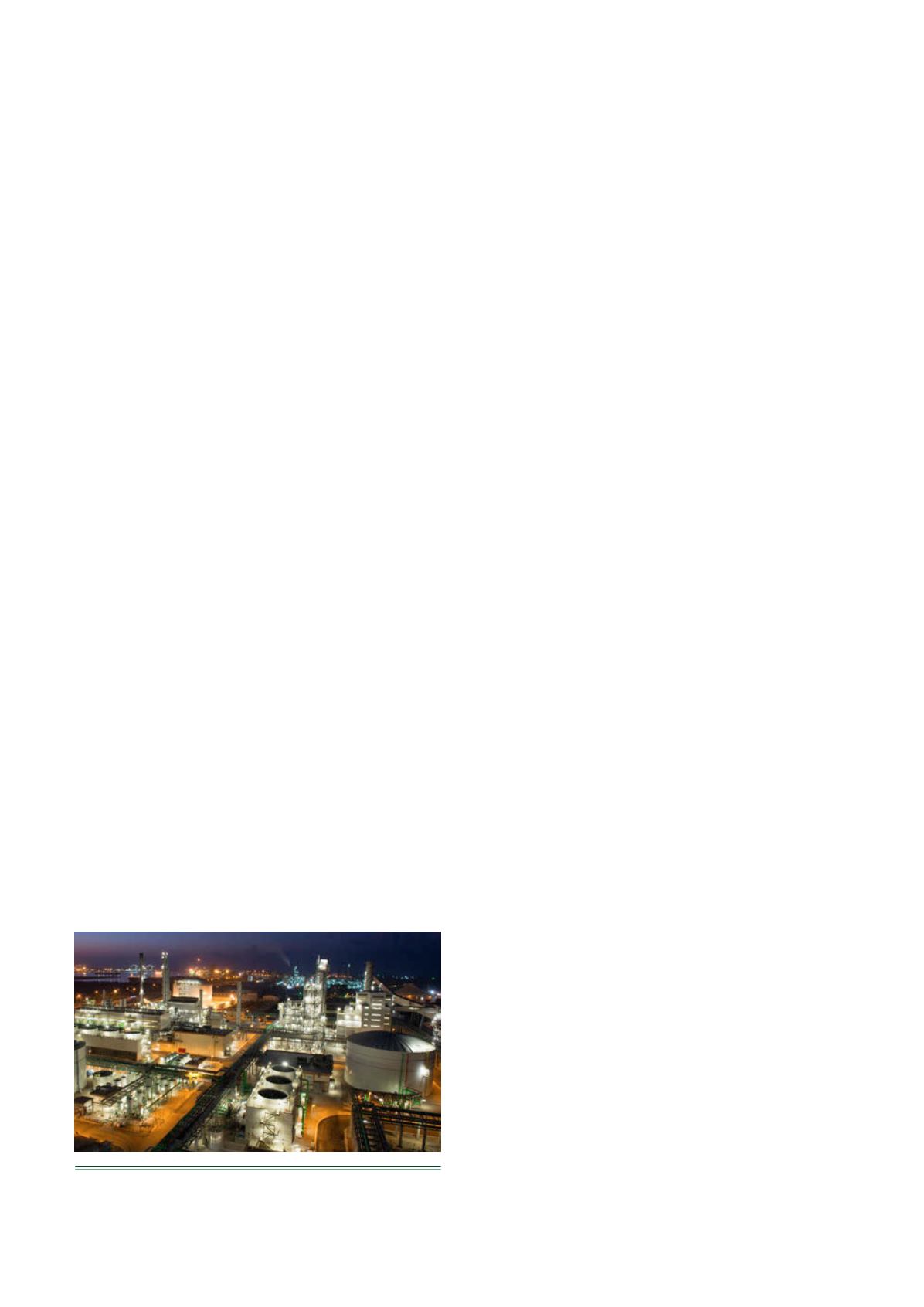
28
| WORLD FERTILIZER |
NOVEMBER 2016
The company recently engineered and commissioned a urea
solution plant in Europe, YARA Sluiskil B.V., which was built on a
brownfield location in the Netherlands. The plant was designed
to produce two different qualities of urea solution for
production of AdBlue®/DEF and feed for granulation and
prilling. Another feature of the plant was the implementation of
28 air coolers with a total heat duty of 187 MW and a total
construction area of 3900 m² for plant cooling and turbine
steam condensing. To meet stringent emission requirements,
special features were provided, such as acidic washing of process
off-gases and an automatic catch pot system – including a blow
off absorber for the event of a tube rupture in the HP synthesis
equipment.
For the production of urea, thyssenkrupp offers a portfolio
containing technologies from leading licensors:
n
n
Urea technology from Stamicarbon, the Netherlands.
n
n
Fluid bed granulation from Uhde Fertilizer Technology and
Stamicarbon, both from the Netherlands.
n
n
Prilling technology from Stamicarbon.
Synthesis section
The company uses the following technology licensed from
Stamicarbon, including:
n
n
Urea LAUNCH MELT™pool condenser design.
n
n
Urea LAUNCH MELT™pool reactor design.
n
n
Urea LAUNCH MELT™pool reactor design with MP scrubber.
n
n
Urea LAUNCH MELT™compact design.
The pool condenser is basically a horizontal reactor vessel
with a submerged U-tube bundle. It combines the function of the
falling-film-type carbamate condenser in the conventional CO
2
stripping process with part of the reactor function. A 30 – 40%
reduction in the reactor volume is achieved by shifting the
reaction volume to the pool condenser.
This is of particular advantage for high-capacity single-train
plants because the reactor is one of the heaviest items of
equipment. The pool condenser is installed in plants with
capacities up to 3500 tpd. thyssenkrupp engineered and
constructed its first Urea LAUNCHMELT pool condenser design
for the QAFCO 4 fertilizer complex, which started up in 2004.
A further step towards full integration of equipment items,
such as the high-pressure scrubber, the pool condenser and the
urea reactor, is the horizontal pool reactor.
Former Stamicarbon owner, DSM, selected thyssenkrupp as its
partner to integrate the world’s first pool reactor, the LAUNCH
MELT pool reactor design, into DSM’s new urea plant at Geleen,
the Netherlands. The world’s second pool reactor plant was also
engineered by thyssenkrupp and came on stream in 2004 and a
2200 tpd urea pool reactor plant with a MP, instead of HP,
scrubber was engineered by thyssenkrupp for OCI IFCo in Iowa,
which is currently under commissioning.
The technologies mentioned above make use of CO
2
as a
stripping agent, which results in an optimum conversion of both
reactants and eliminates the need for an MP recirculation section
and pure ammonia recycle. CO
2
and NH
3
consumption have been
reduced to almost stoichiometric values through continuous
process improvement with respect to emissions.
The Stamicarbon Urea LAUNCHMELT pool condenser and
pool reactor design offer a variety of benefits, including lower
capital investment and operating costs; a reduction in energy
consumption, maintenance costs and emissions; increased
efficiency and on-stream time; and improved safety and reliability.
This offers the following advantages:
n
n
Easy maintenance
: the limited amount of equipment and the
plant’s compact arrangement greatly facilitate plant
maintenance.
n
n
Large single-stream plants
: in recent years, a production
capacity of 3500 tpd urea solution has become the common
capacity for single train urea solution plants engineered, built
and commissioned by thyssenkrupp.
n
n
On-stream time
: operational simplicity combined with gravity
flow, fewer process steps, less synthesis equipment and the
most moderate synthesis conditions facilitate operation and
guarantee high on-stream times.
n
n
Simple operation
: the process involves less equipment and
fewer process steps than competitive processes and, with its
unique measurement of the N/C ratio using an advanced
density meter, operational comfort is ensured.
Granulation section
The UFT fluidised bed granulation process, a thyssenkrupp owned
licence, is a leading granulation technology due to its high
efficiency and its ability to ensure excellent product quality with
extremely low solids recycle rates. The process offers maximum
operating flexibility and reliability, as well as minimum
maintenance requirements. Moreover, the fact that it produces no
wastewater and only minimal dust emissions also means it
conforms to the most stringent environmental laws while
producing extremely hard, round granules that are resistant to
crushing and abrasion. These granules can be produced in a wide
range of pre-defined sizes.
The construction of the world’s largest single-train granulation
plant with a capacity of 3850 tpd was made possible by this
advanced process.
The UFT process comprises the following steps. First,
formaldehyde is added to the urea melt as a granulation aid before
it is injected into the granulator. The granules are formed through
solidification of urea melt droplets deposited on the seed
material. Fluidisation air, which is not dehumidified even in very
hot, damp climates, is supplied to the product layer through a
perforated plate. The granulated product extracted from the
granulator is cooled down in the first fluid bed cooler and lifted by
bucket elevators to the screening section.
Figure 2.
Fertilizer complex ENPC, Egypt, with urea
solution and granulation plant on the right side.


